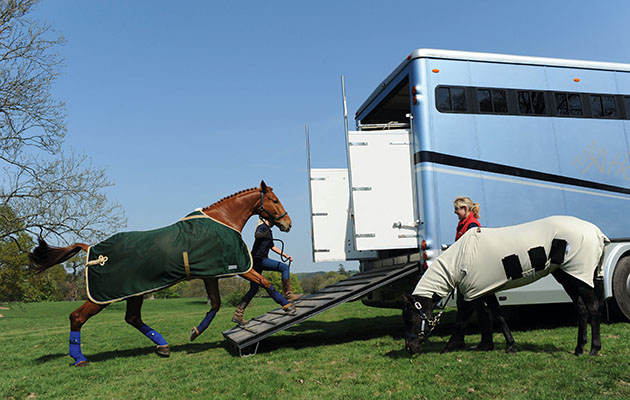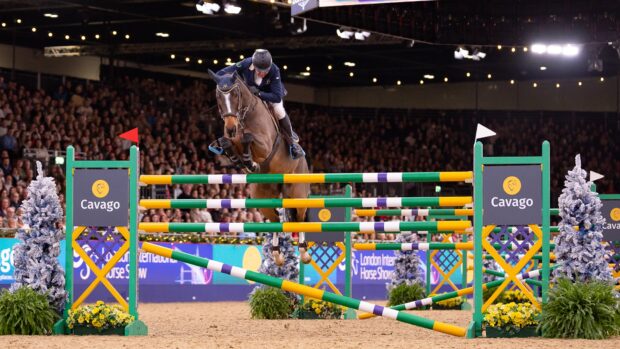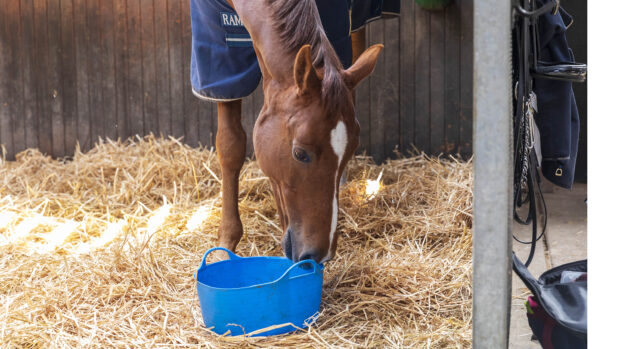EQUESTRIANS have been reminded what to do when faced with a broken-down horsebox on the road following recent tragic events.
On 24 August, Nick Gauntlett’s stallion Party Trick and three horses belonging to Sophie Hulme died when Nick’s broken-down horsebox was hit by a lorry on the A9. Following this, concerns have been raised on social media about what to do when a breakdown occurs – especially when this happens on a road without a hard shoulder or on a smart motorway.
Chris Facer, Equine Rescue Services’ (ERS) network and business development manager, told H&H that horsebox owners should check vehicles before setting off, and ensure they have equine-specific breakdown cover in place, but said there will always be “the unforeseen or unexpected incident”.
In the event of a breakdown, ERS recommends switching on hazard warning lights, and sidelights if it is dark or daylight is fading, and placing a warning triangle approximately 45 metres behind the vehicle to give other drivers time to react. But this guidance differs if the lorry is on a motorway or major road.
“Do not use a warning triangle on a motorway – it’s dangerous to walk along the hard shoulder and the speed of passing traffic could cause the triangle to be blown into a live lane, putting others at risk,” said Mr Facer, adding that owners should never attempt to repair horseboxes on a motorway or busy main road.
“Do not attempt to open the ramp. The noise from the road, particularly if the traffic is heavy, can spook horses.”
Mr Facer added that smart motorways are dangerous places to break down, particularly in live lanes.
“Wherever possible, leave the motorway or get to an emergency refuge area – this is the safest option. Contact Highways England and make them aware of your position, and contact your breakdown provider,” he said, adding that it is important to have sufficient phone battery and the app What3Words on a phone to pinpoint the breakdown location. Anyone in a potentially dangerous location or needs police assistance should call 101.”
Claire Barker, managing director of PRP Rescue Services Ltd, told H&H many of the company’s customers have been extremely worried following Nick Gauntlett’s accident.
“The fact that Nick and his family were able to get out and away from their vehicle is something that we are able to take from the awful accident to help keep our customers safe,” she said.
“Horse owners are often extremely reluctant to leave their horses which we really do understand, however the most important piece of safety advice we can give is to do exactly that. Certainly the last place anyone should be if a vehicle is stranded on a busy road is in the back with the horses. Traffic noise can be unsettling, and often if a vehicle has stopped and then there are people around them the horses will expect to be unloaded which may unsettle them further. A confined space with an unpredictable animal (which even the quietest horse can become under these circumstances) is not a safe place to be. We have been saying this to customers for years but sadly it is only now, following this accident that they are taking our advice.”
Highways England launched the “Go Left” campaign this year, which advises that if drivers get into trouble on a motorway, they should move into the left lane, enter the emergency area or hard shoulder, use hazard lights and leave the vehicle to stand behind a safety barrier if there is one and it is safe to do so.
Anyone who is unable to exit the vehicle, has stopped in a live traffic lane or feels in danger should stay in the vehicle with seatbelts and hazard lights on.
“We are acutely aware of the dynamic situation of horse transport. Incidents are dealt with according to their individual circumstance,” a Highways England spokesman told H&H.
“We advise to always move transporters to a place of relative safety if possible, where transfers can take place safely. If not possible, then horses may be transferred from one transport to another, usually with traffic stopped in both directions by national highways traffic officers.”
Coach and two-star eventer Tara Williams who had a broken-down horsebox with her horse on board on the A419 in April 2019, has bought reflective adhesive strips for the rear of her lorry following recent events.
“The equestrian community has felt anxious about travel after what happened to Nick, and devastated for those involved. It made me look at my lorry and I realised we had very little in the way of reflective strips or hi-vis. Although you have hazard lights, they won’t work if your battery is not working,” she said.
“I think it will be a while until people are comfortable again – and it’s no bad thing people are realising we’ve got to be prepared.”
In the event of a breakdown, Highways England can be contacted on 0300 123 5000, local police on 101 or in case of emergency, dial 999.
You might also be interested in:

Four event horses die after lorry collides with broken down horsebox

What to do if you haven’t used your horsebox for a while: your essential checklist

The ultimate guide to horsebox insurance

Subscribe to Horse & Hound magazine today – and enjoy unlimited website access all year round
Horse & Hound magazine, out every Thursday, is packed with all the latest news and reports, as well as interviews, specials, nostalgia, vet and training advice. Find how you can enjoy the magazine delivered to your door every week, plus options to upgrade your subscription to access our online service that brings you breaking news and reports as well as other benefits.




